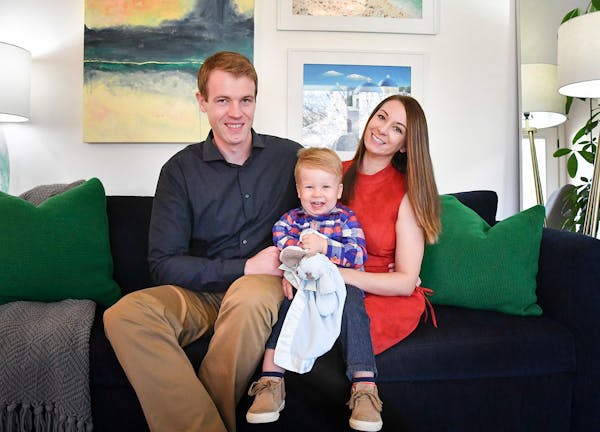When choosing flooring for his home, Craig Jansma decided to flip coins: Heads, for his office. Tails, for his guest room.
Both rooms in Jansma's remodeled 1953 house in Minnetonka now glow with the copper sheen of wall-to-wall pennies — 51,000 of them laid tails-up in the bedroom, and 46,000 laid heads-up in the office.
"I had a hankering to do it somewhere," said Jansma, owner of the Legacy Building Co., after seeing penny floors at Butcher & the Boar restaurant in Minneapolis.
Being a builder, he developed his own method for prep and installation. After removing the existing carpet, he took the floors down to the subfloor, so that he could install heating coils to warm the penny surface, then rebuilt the floors. "I wanted to match the height of the hardwood floor in the hall," he said.
Jansma withdrew the thousands of pennies he needed for the project in $5 rolls, then transported the 300- to 400-pound load to his house in cargo vans.
He laid the pennies in "nice neat rows," and finished them with self-leveling clear epoxy.
Now that he's refined the technique, Jansma is hoping to installing penny floors for others. But you'll have to save your pocket change. The cost of a heated penny floor is about $30 per square foot, substantially more than the cost of a typical tile floor. "It's very labor-intensive," he said.
It's worth it to have a distinctive floor that's warm underfoot in winter, in Jansma's opinion. And with a national debate underway about whether it's time to retire the penny, a floor covered with them could become a collector's item.
"This definitely stands out," Jansma said of his penny-paved rooms. "They bring a smile to my face."

The 5 best things our food writers ate this week

A Minnesota field guide to snow shovels: Which one's best?

Summer Camp Guide: Find your best ones here

Lowertown St. Paul losing another restaurant as Dark Horse announces closing

